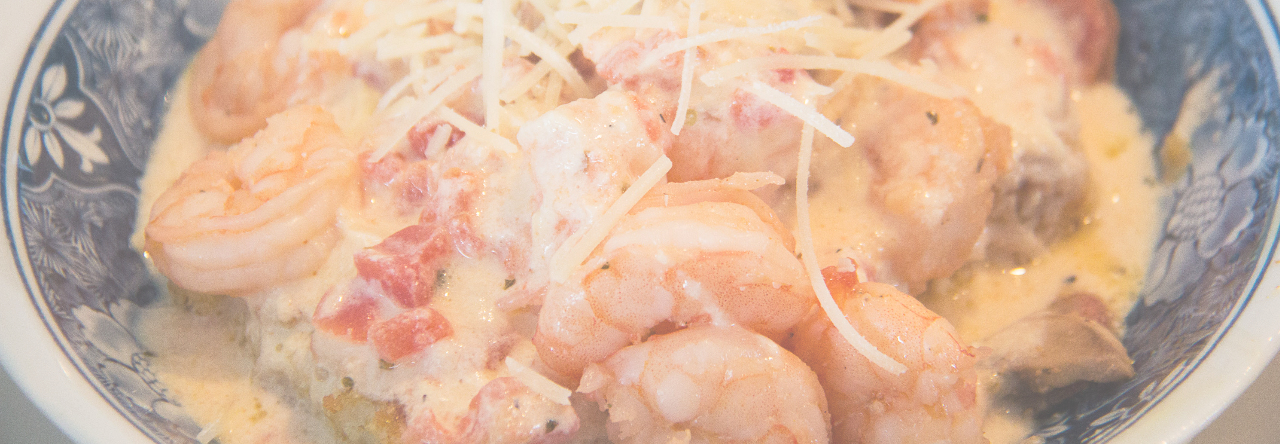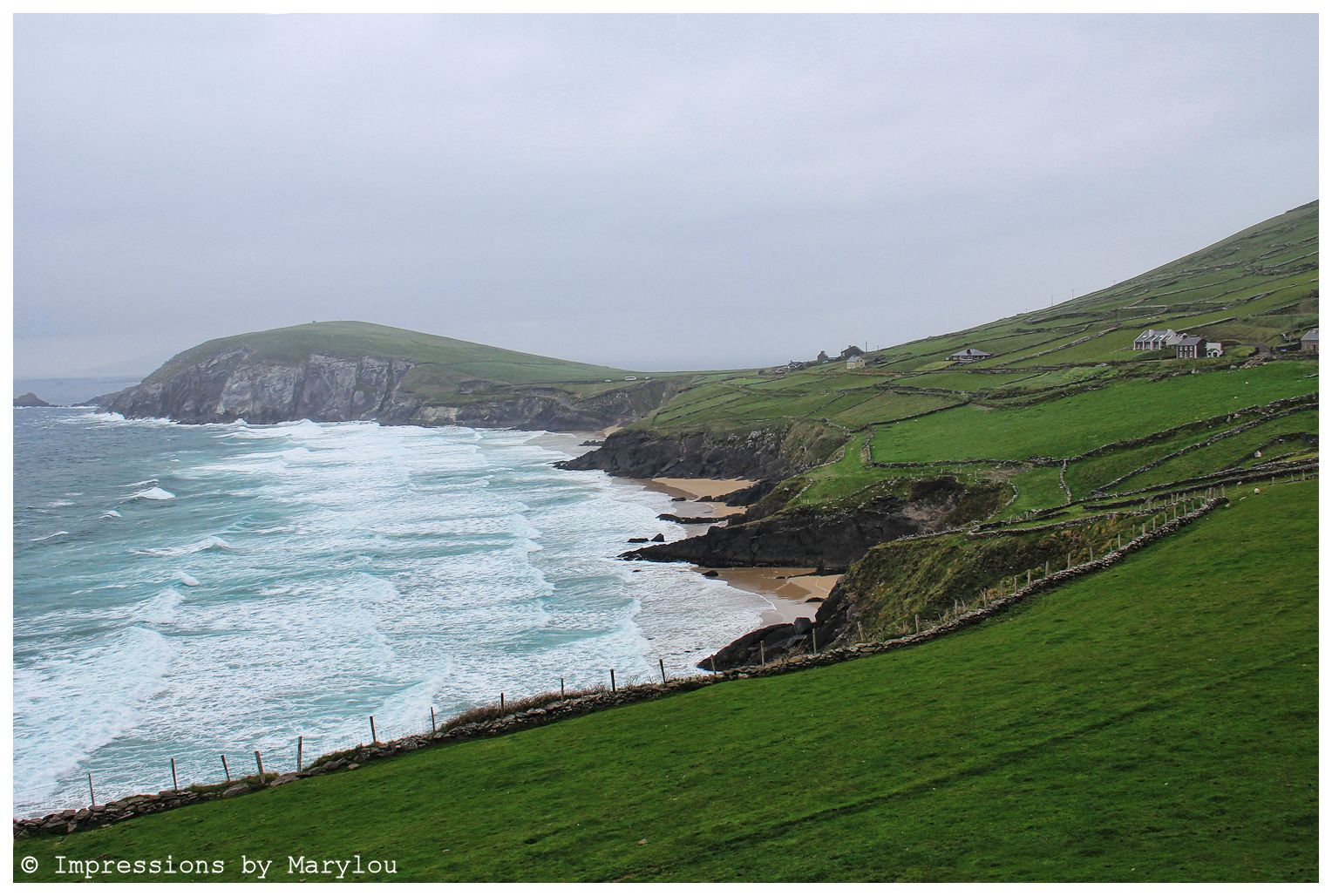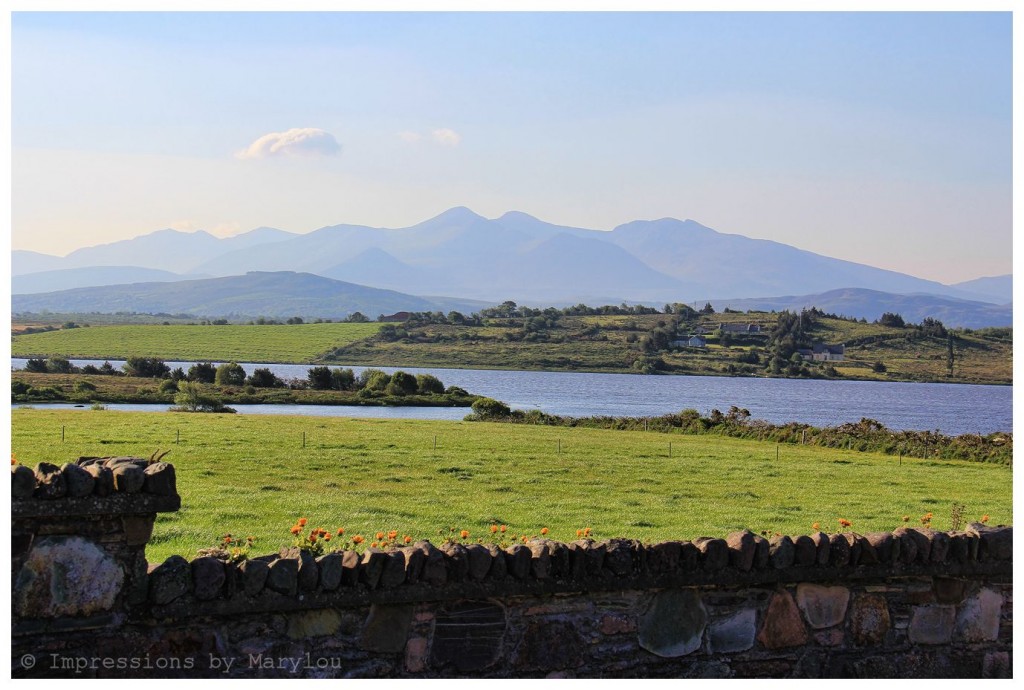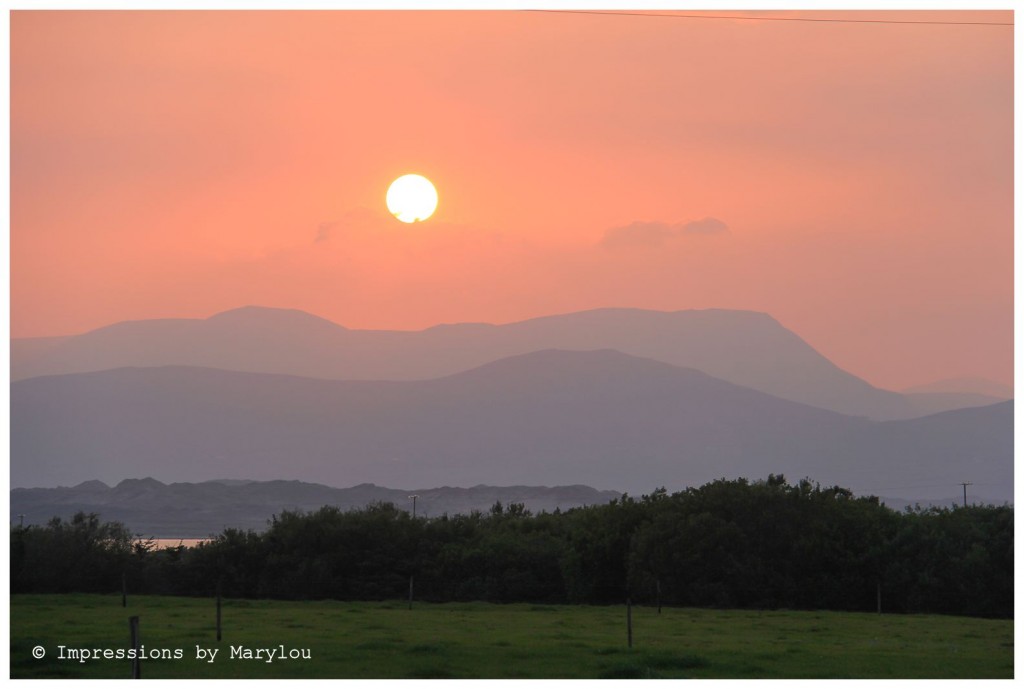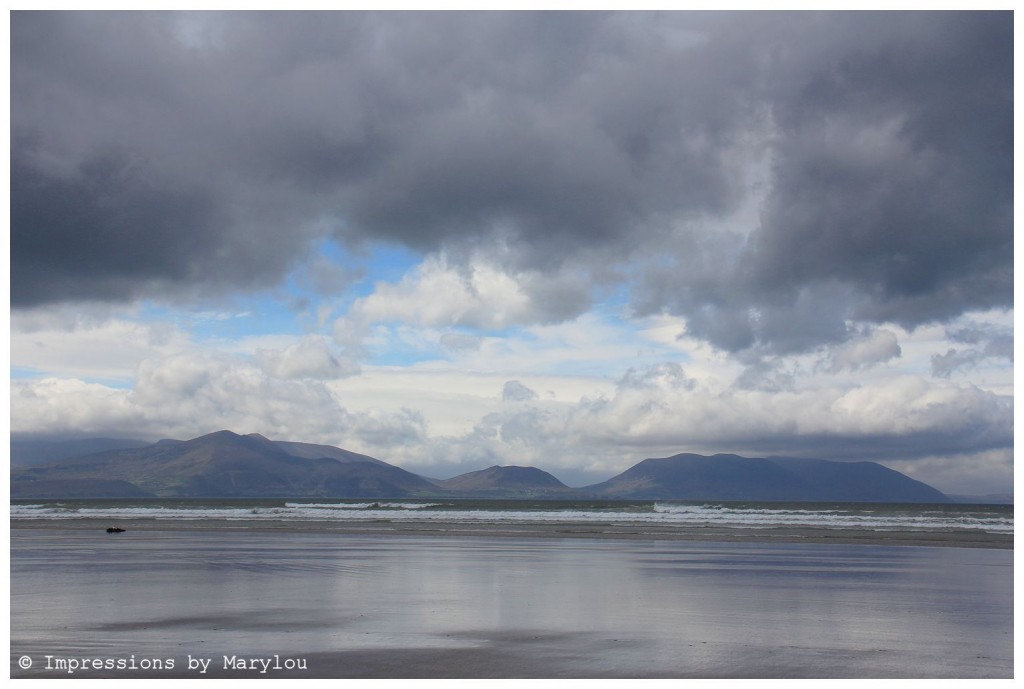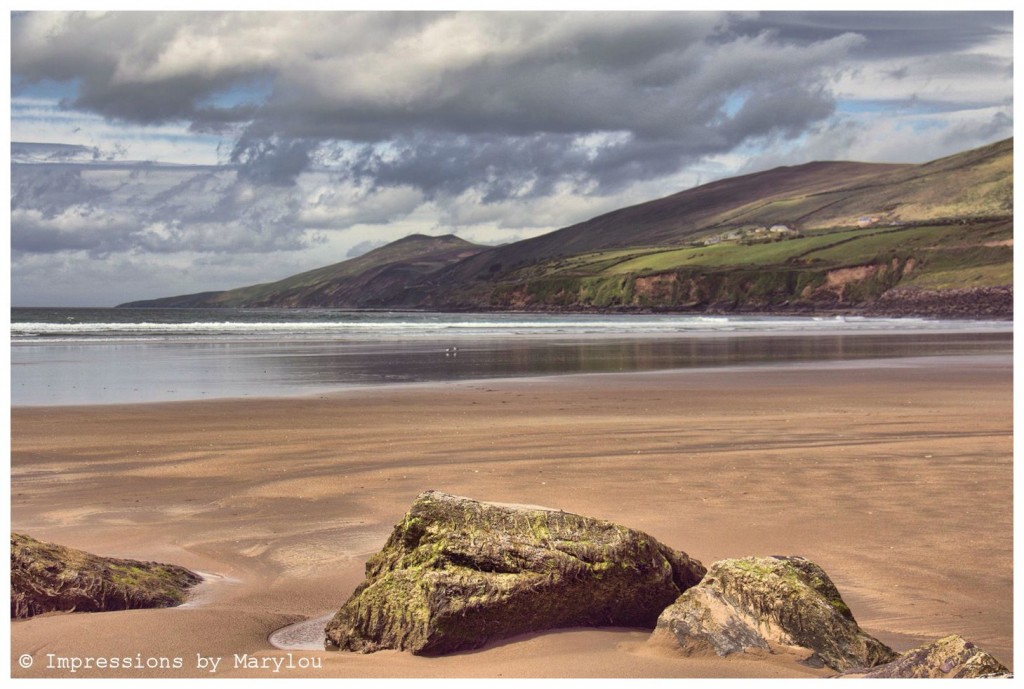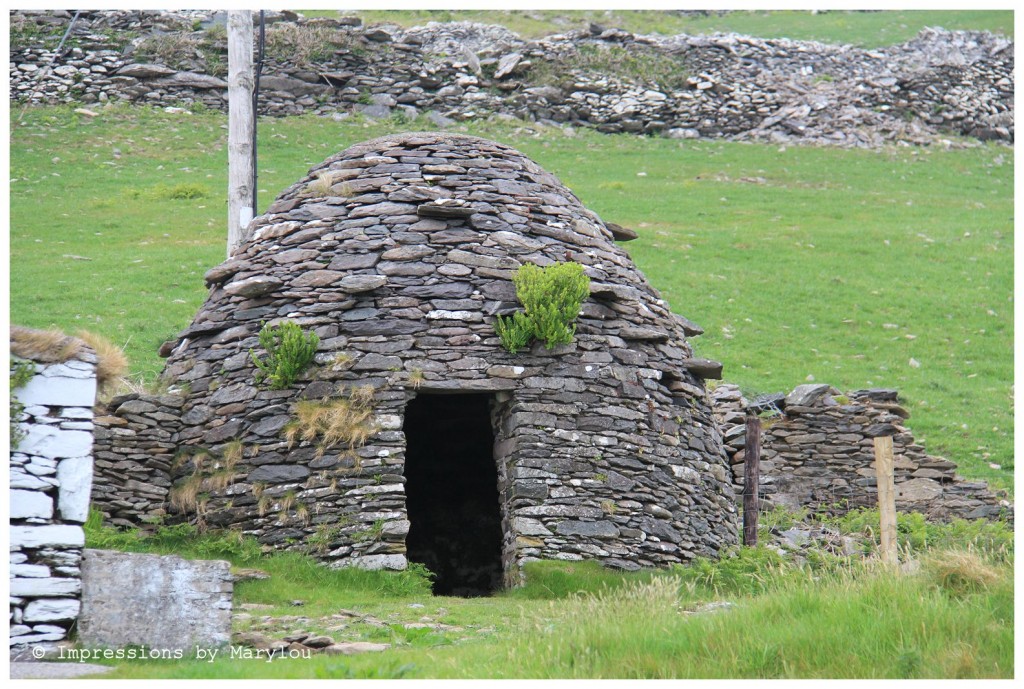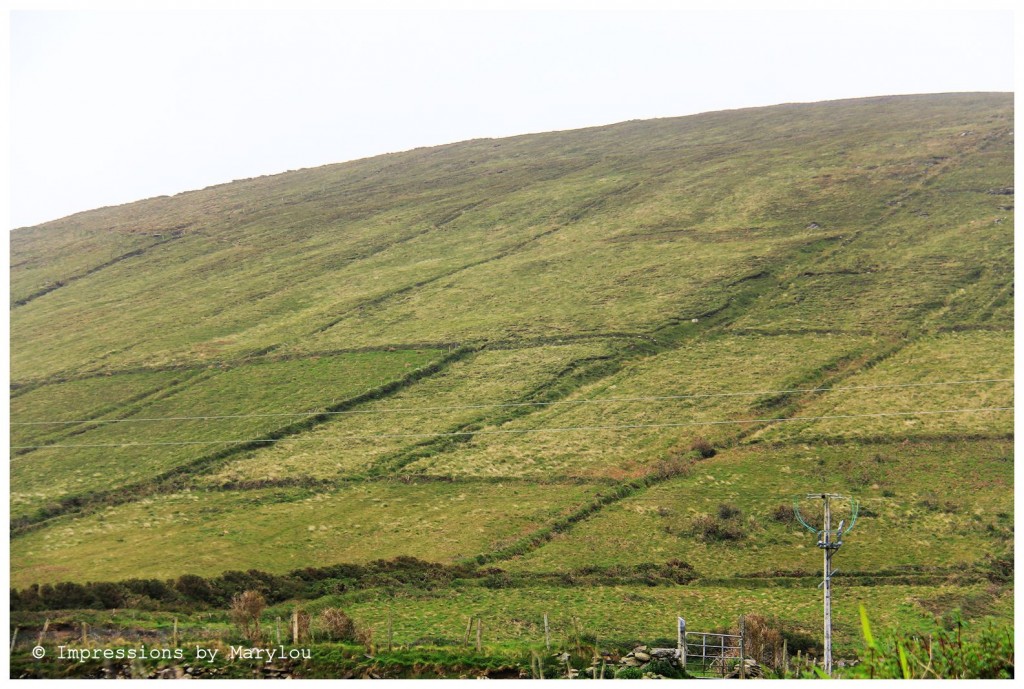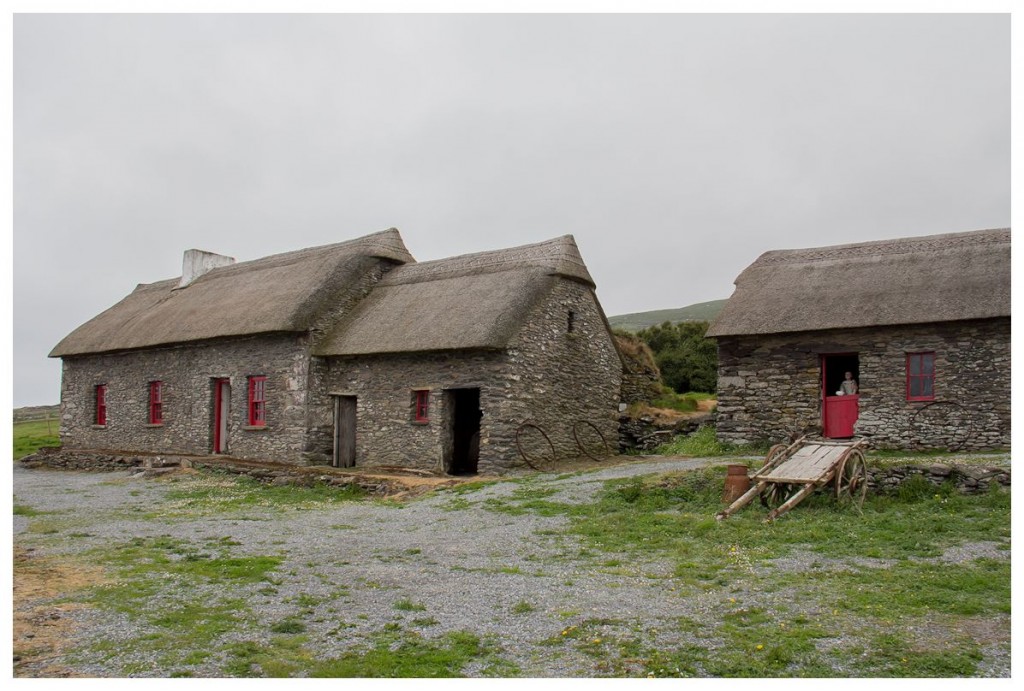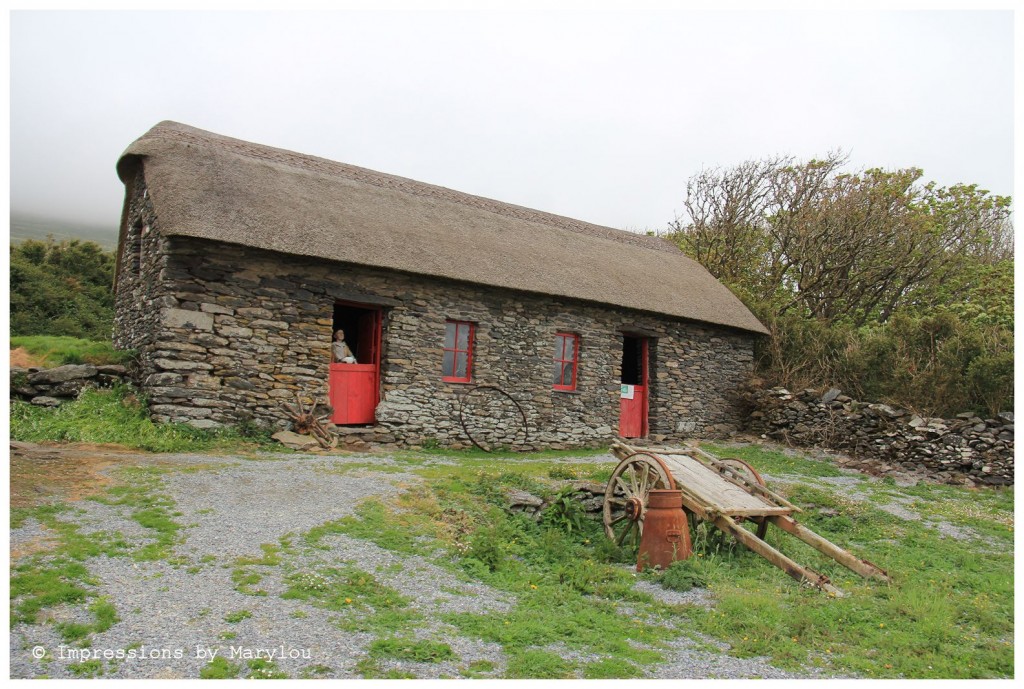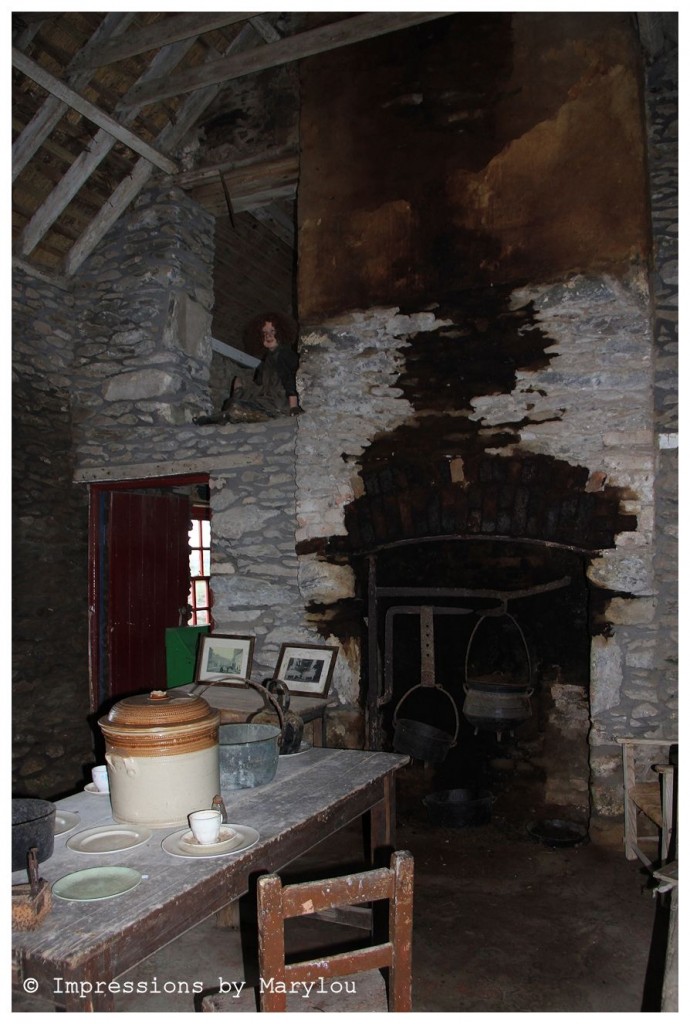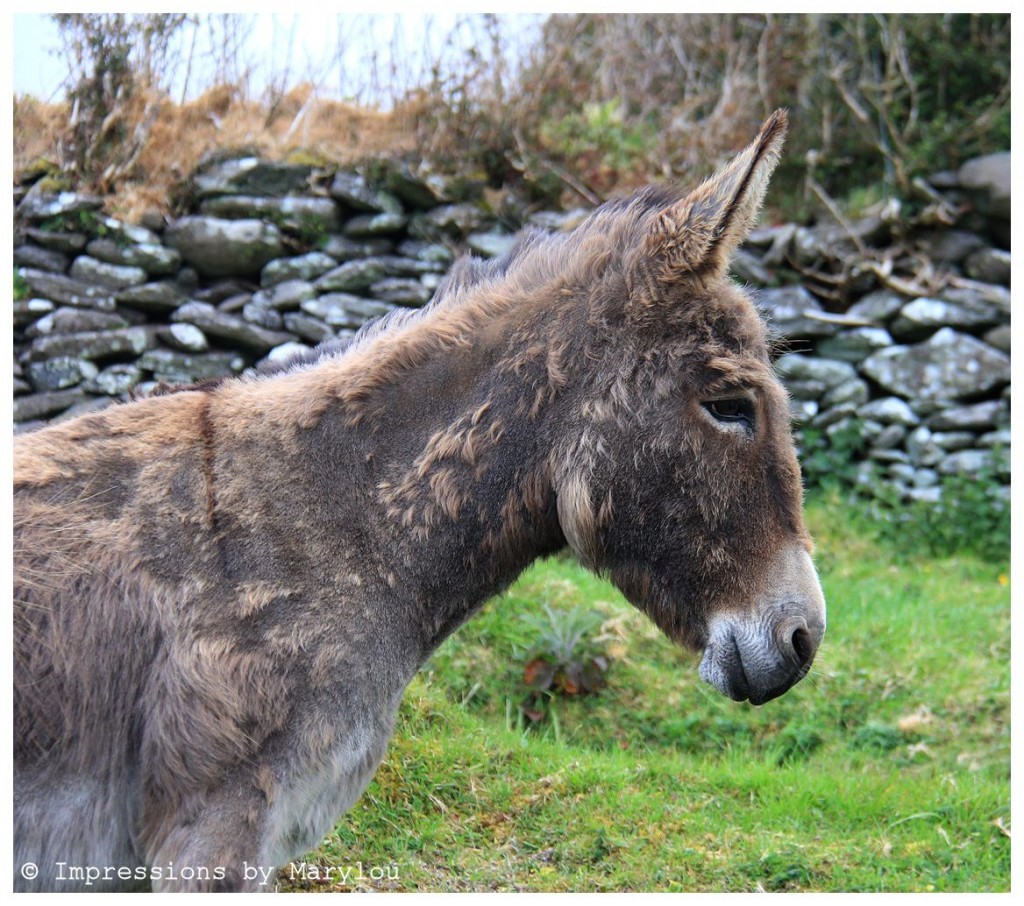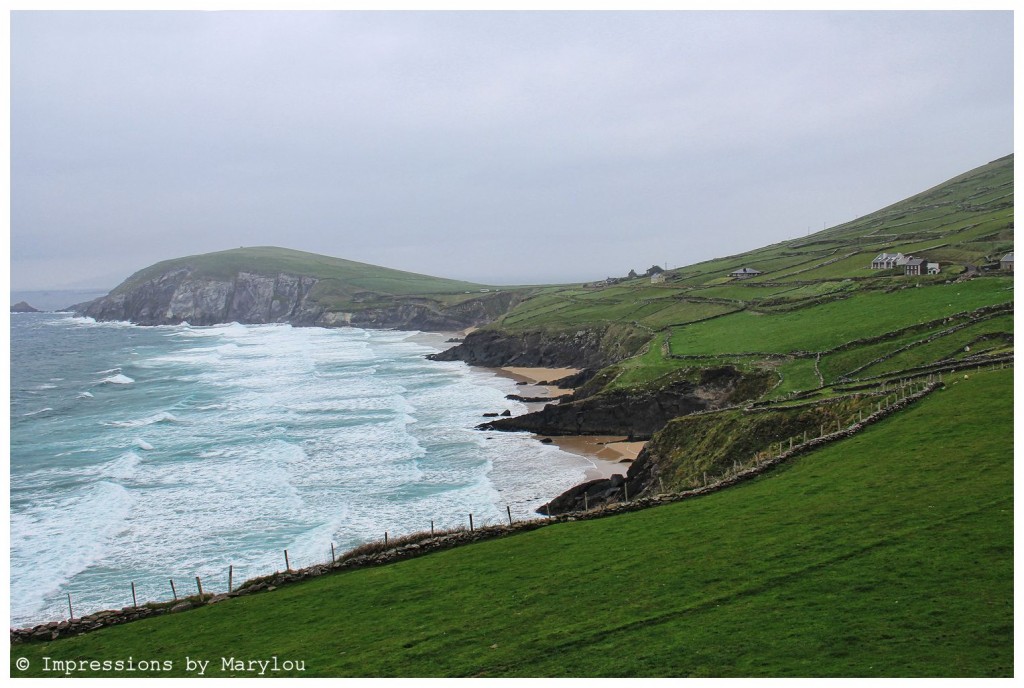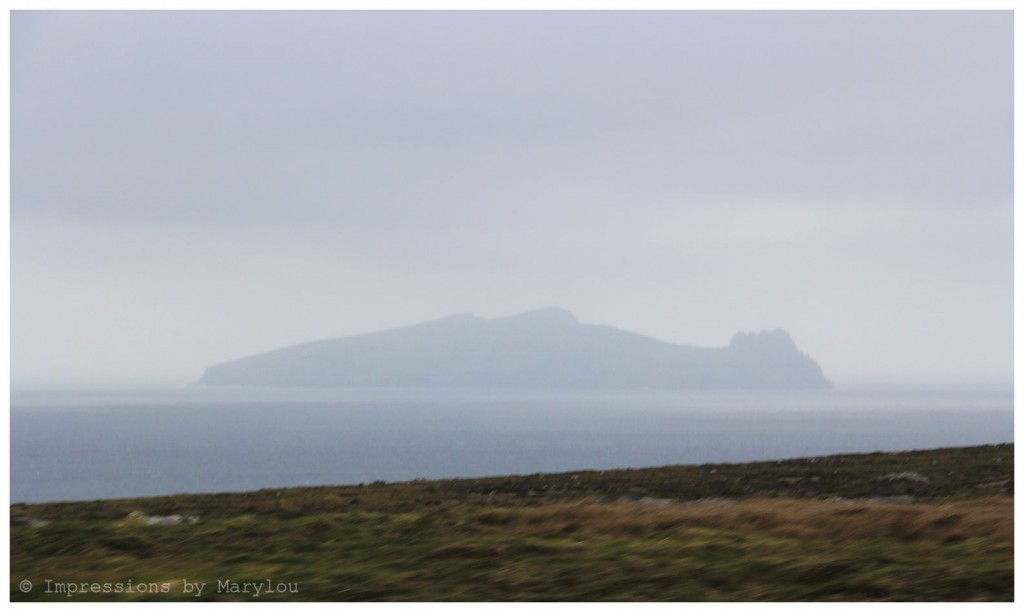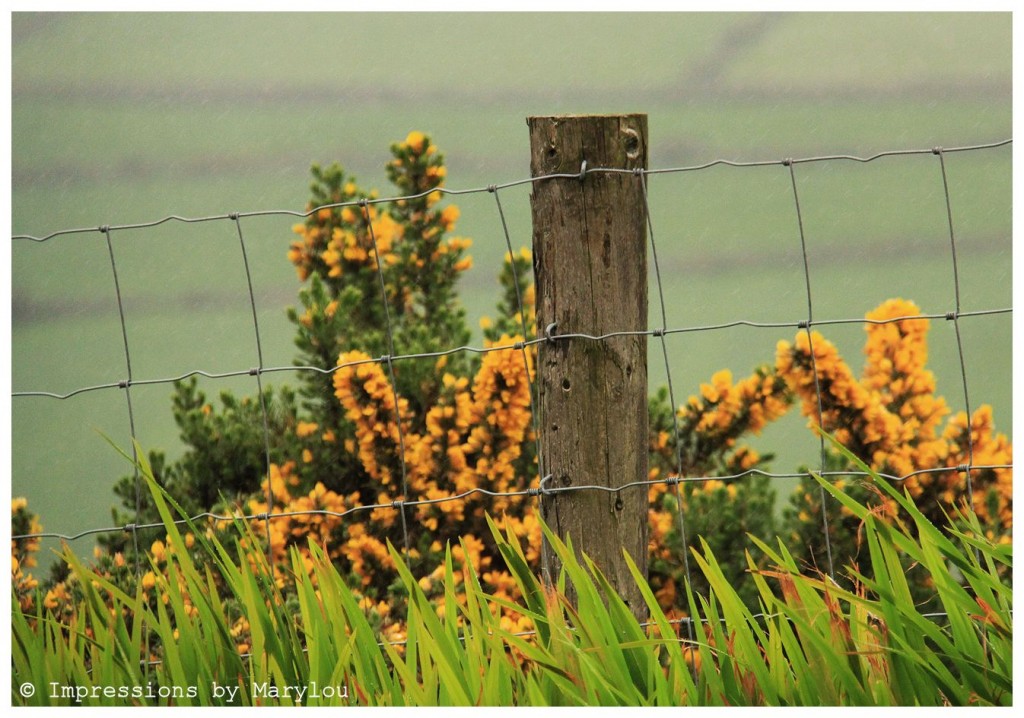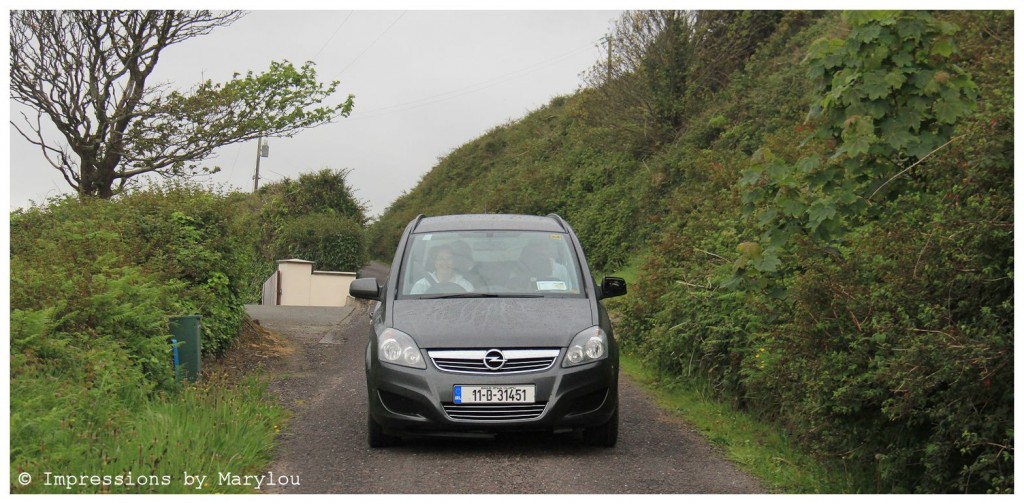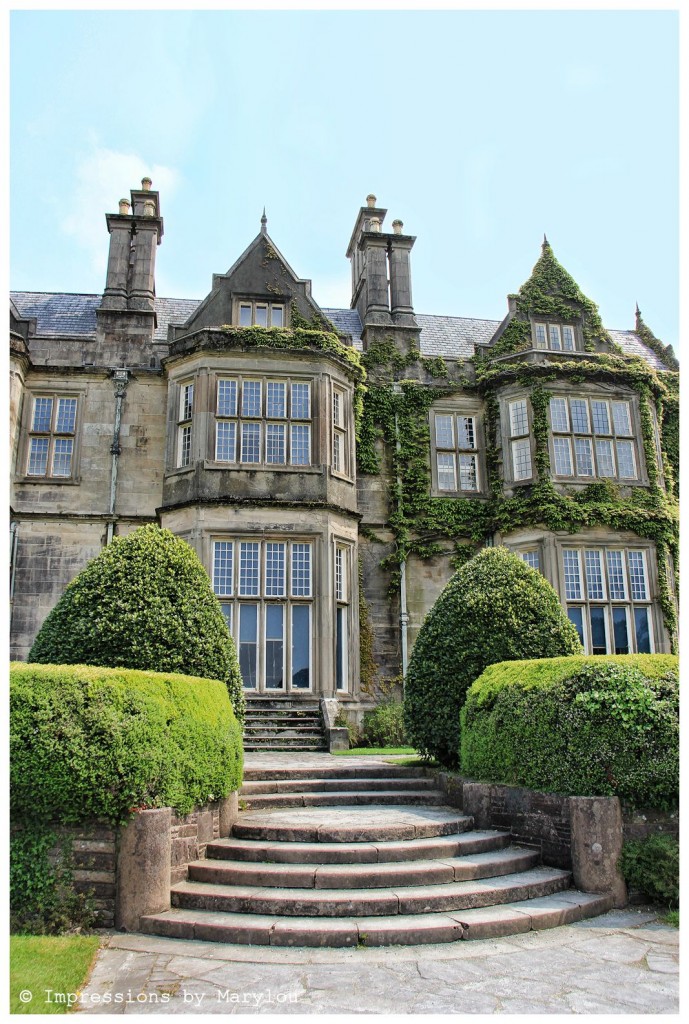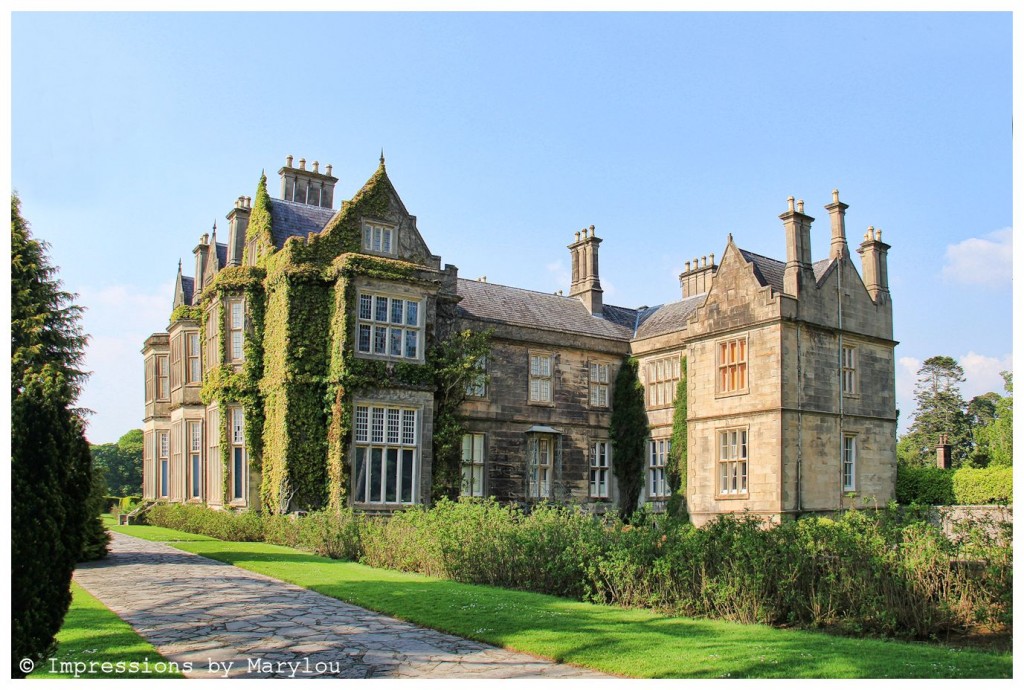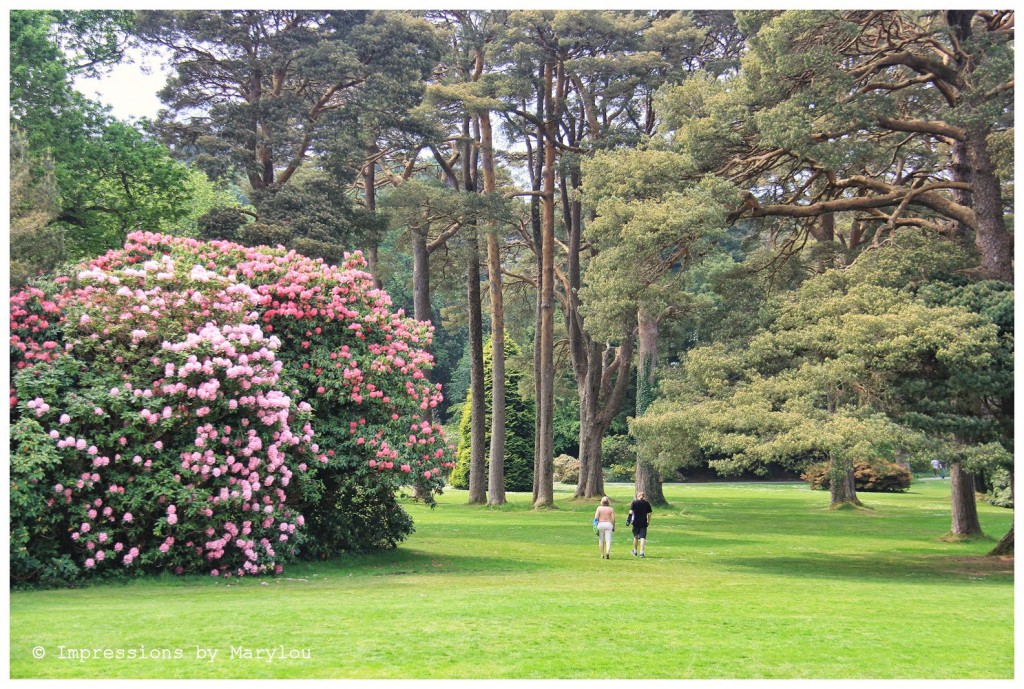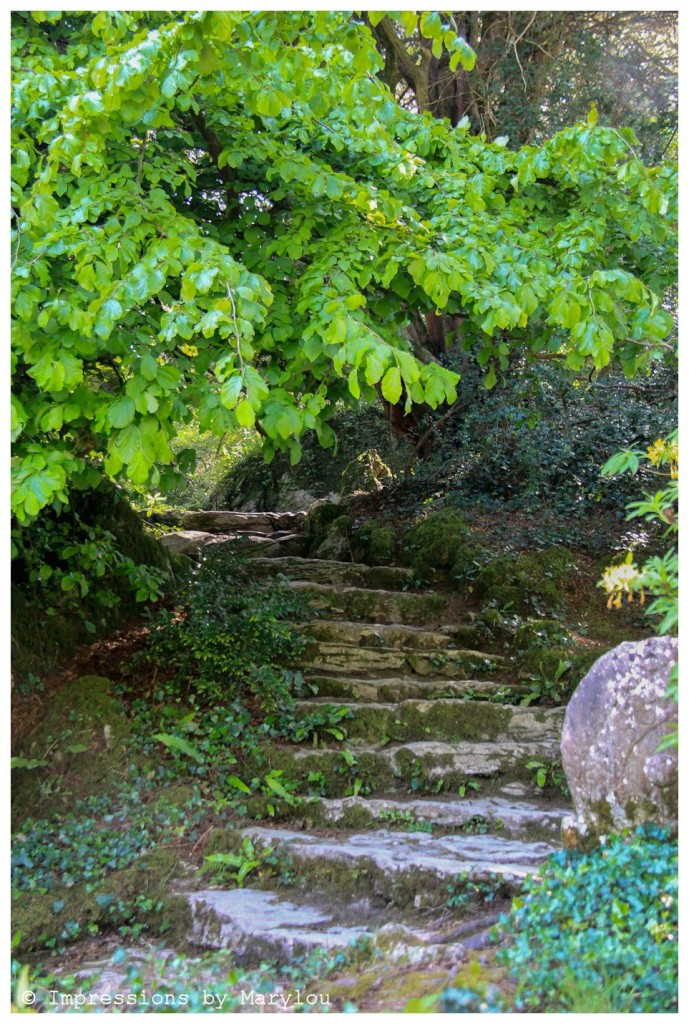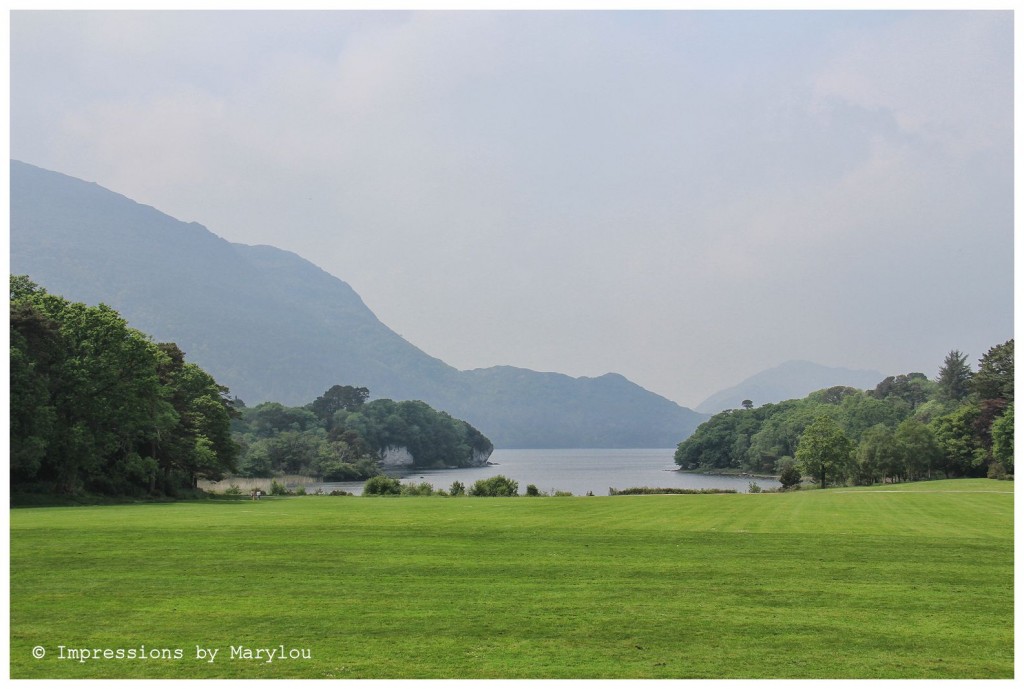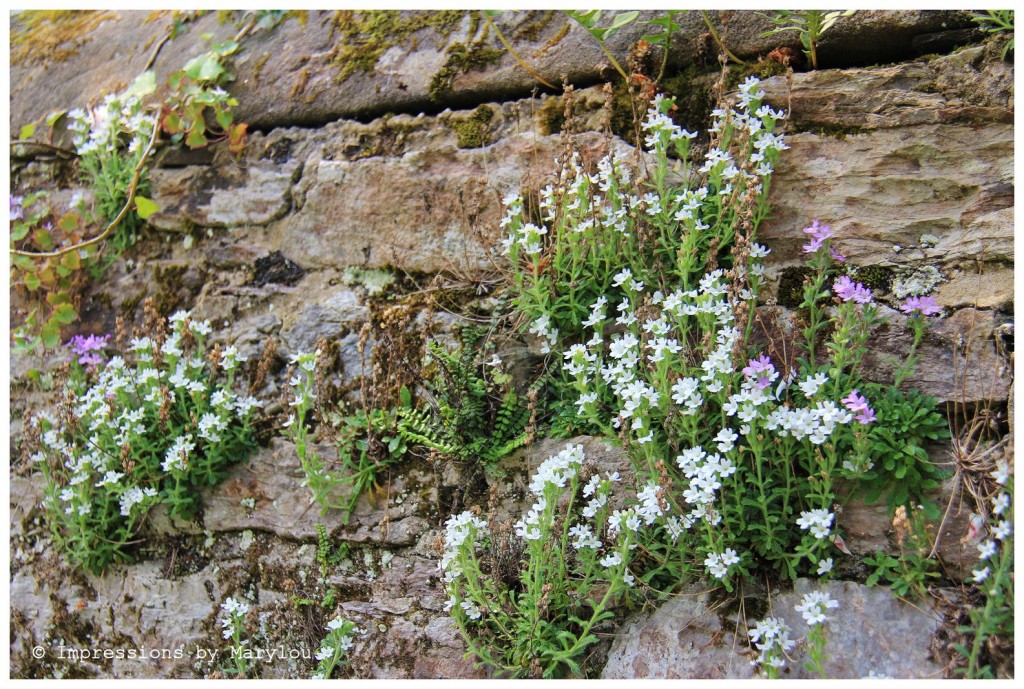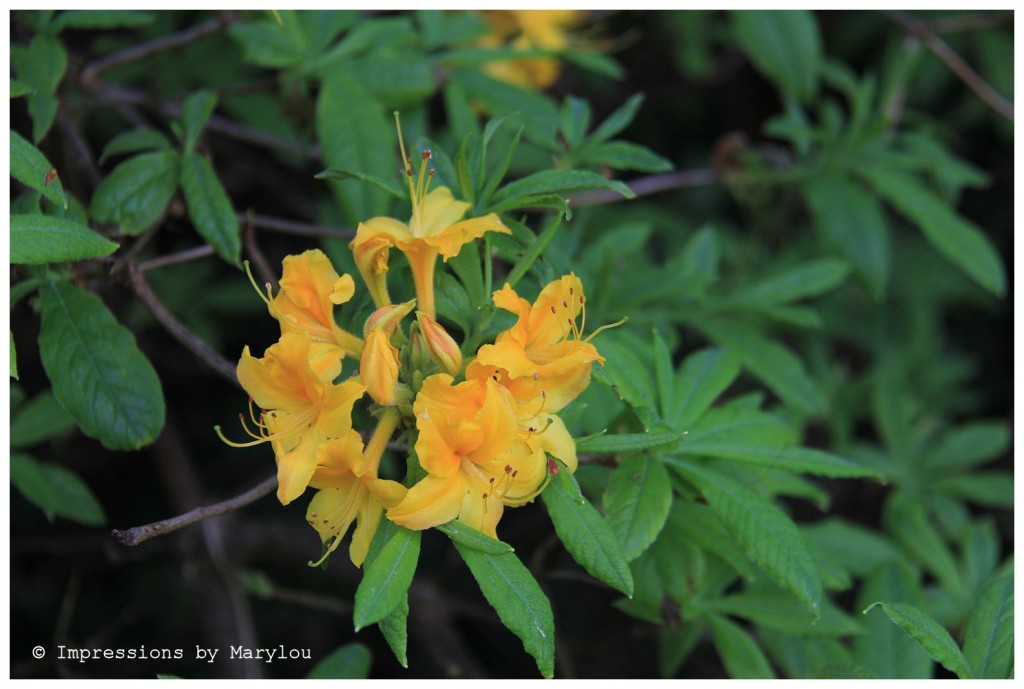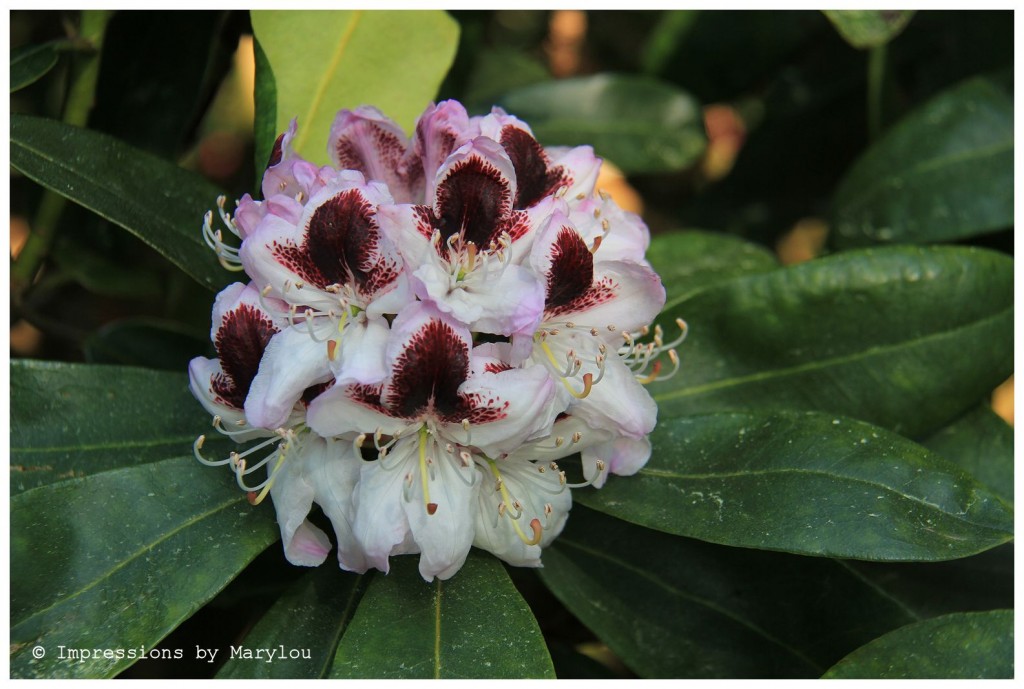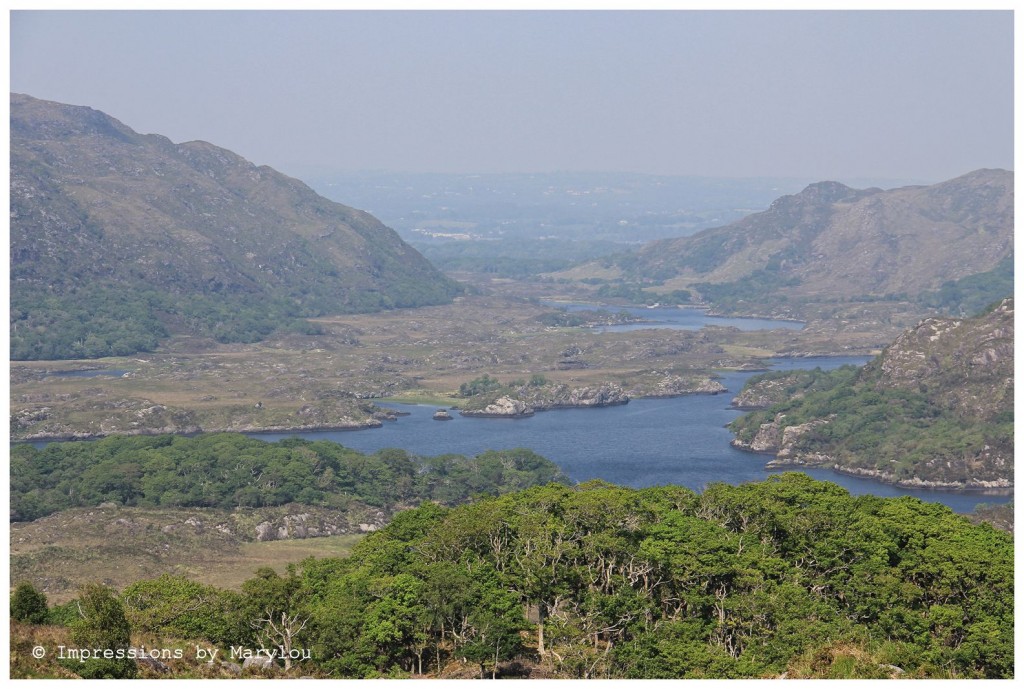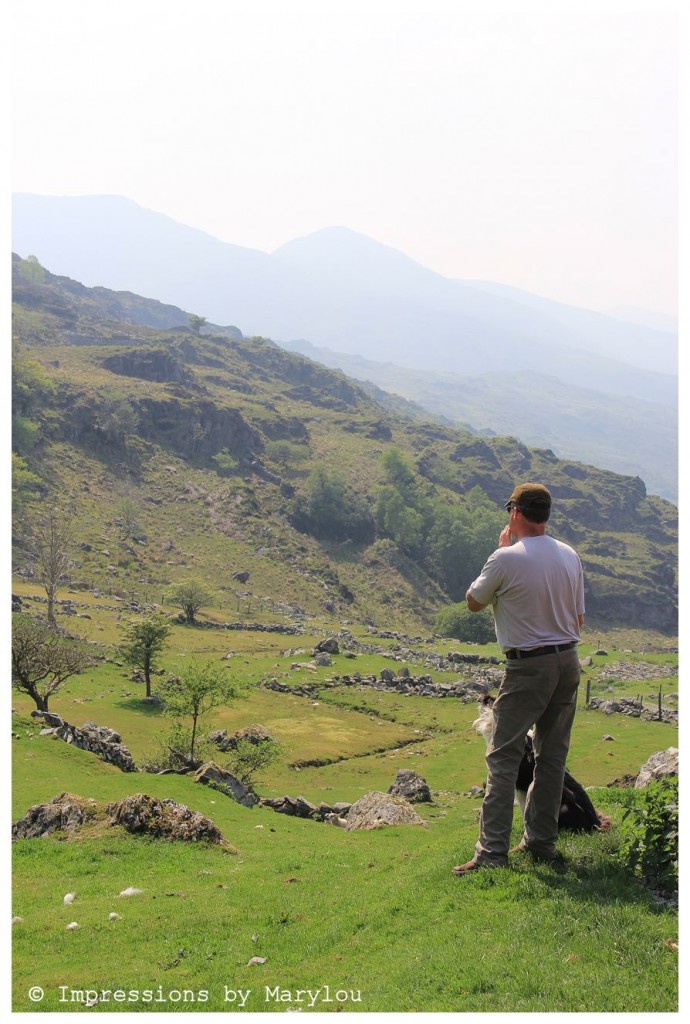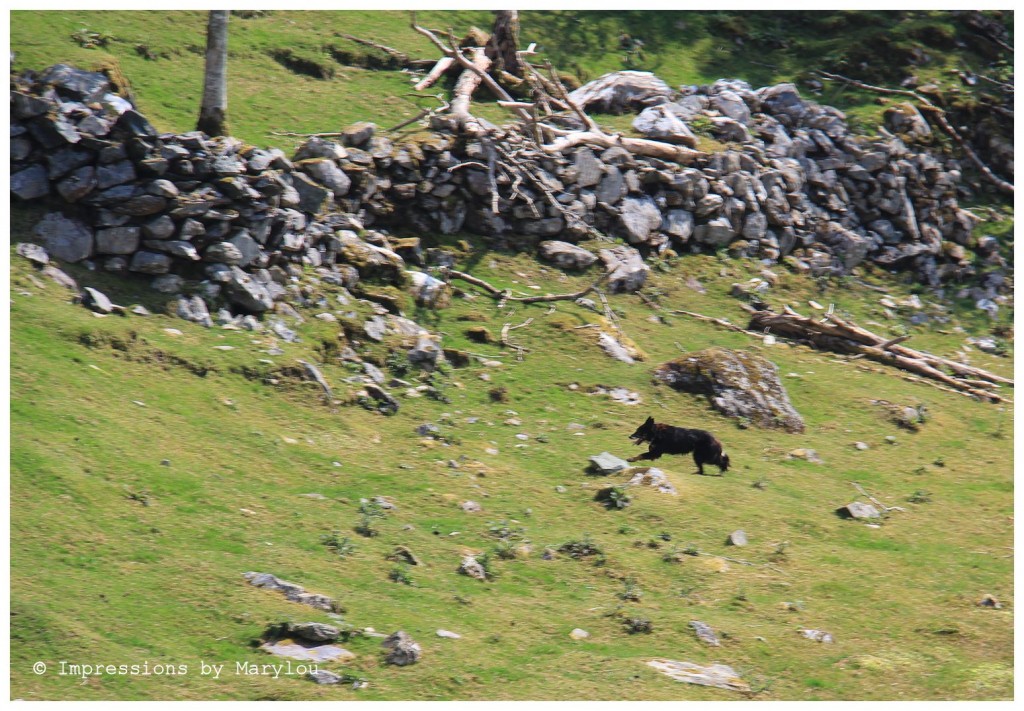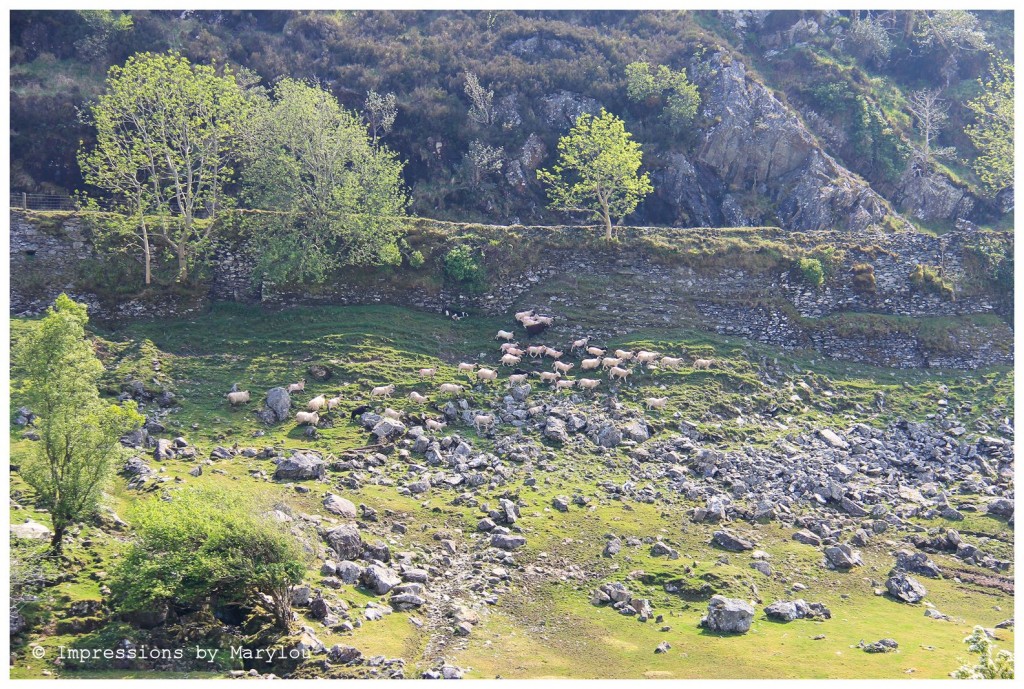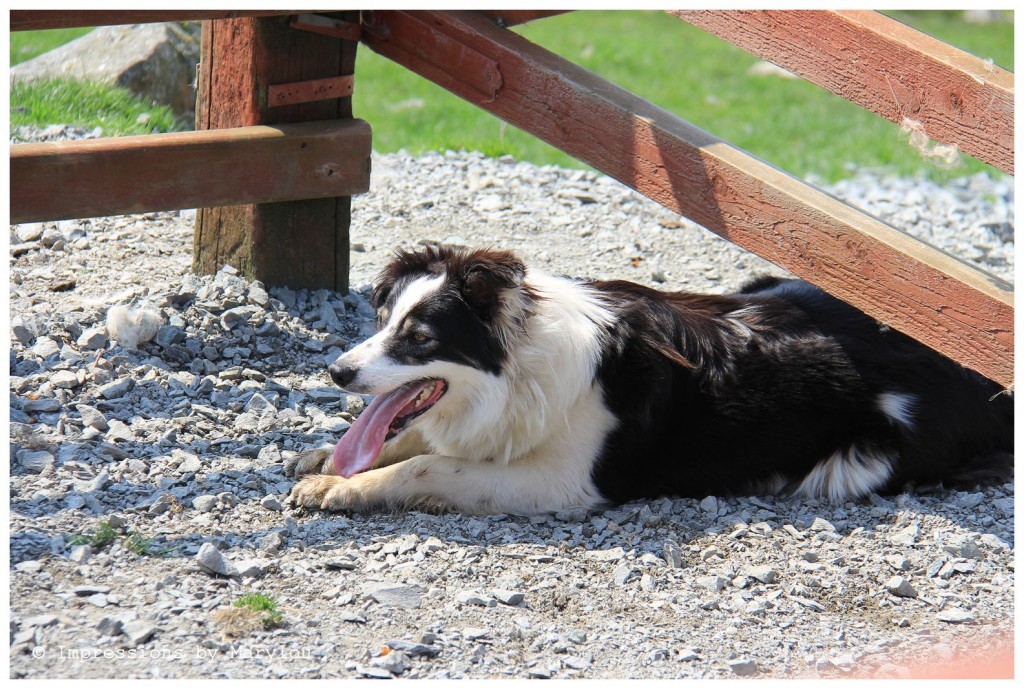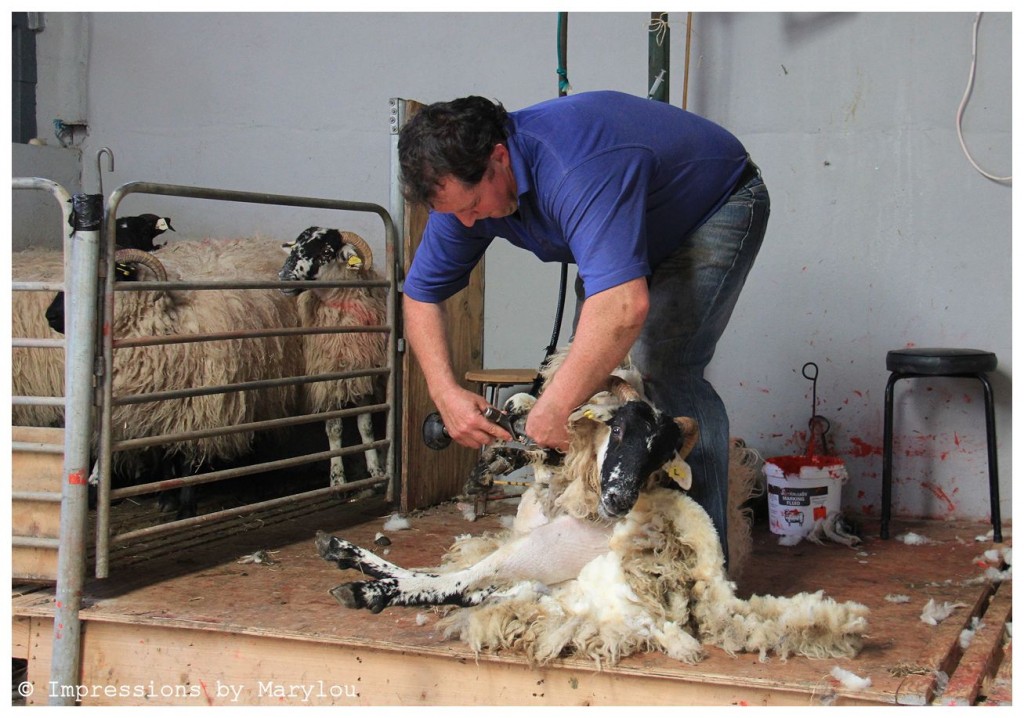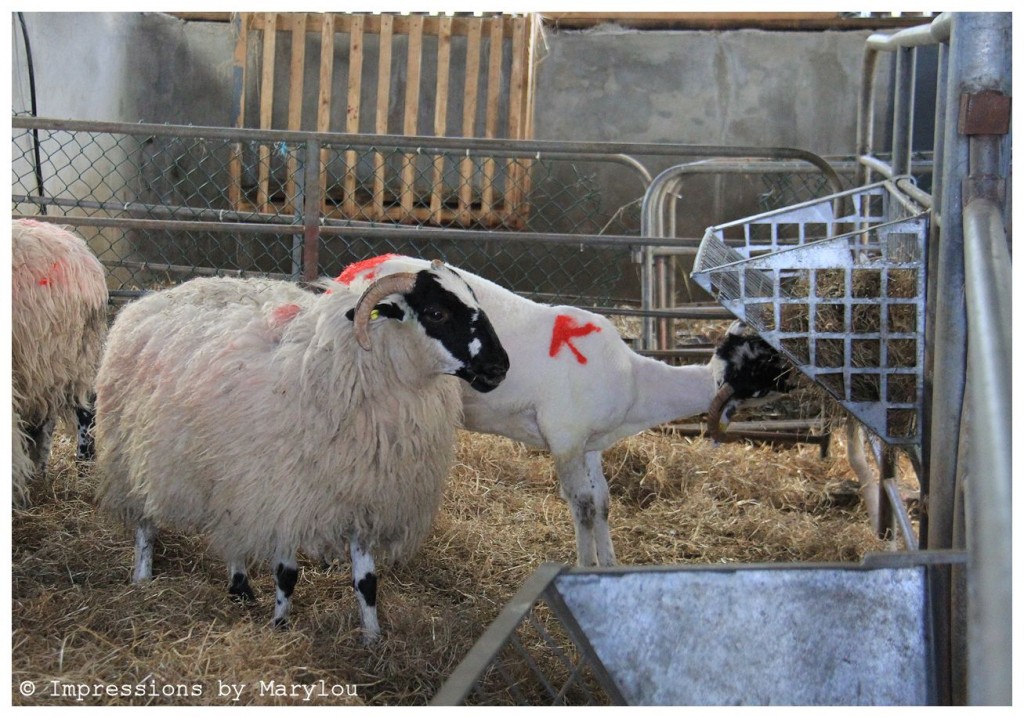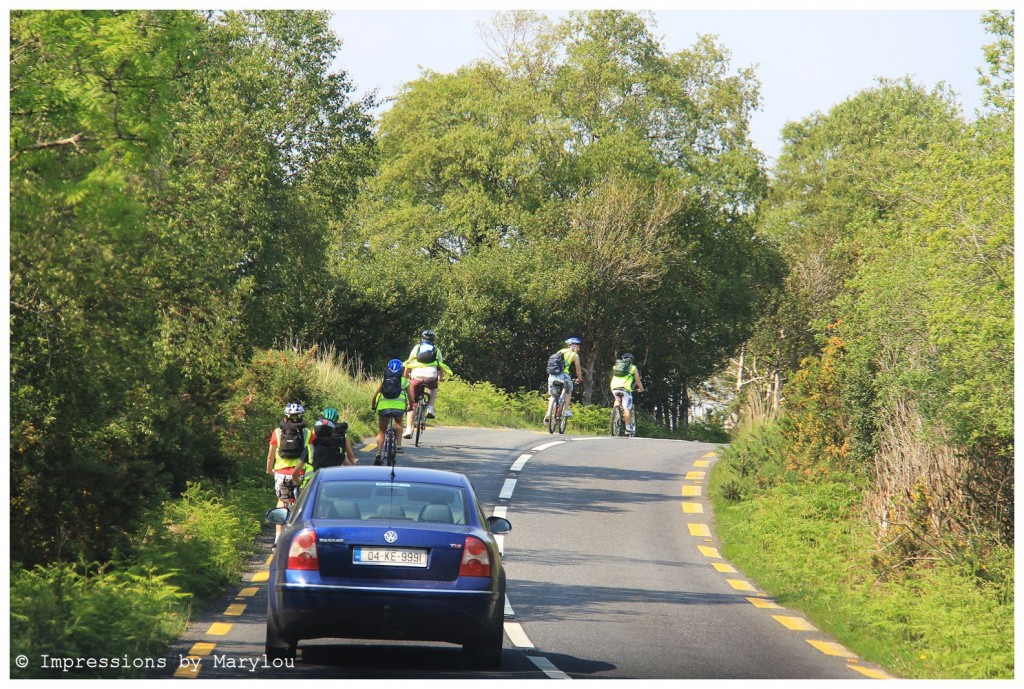We took the ferry from Holyhead, Wales into Dublin, Ireland. It was a very large ferry and we had a relaxing couple of hours crossing the Irish Sea. After going through customs, we caught a taxi to central Dublin to our the car rental place. They were sure we needed a mini-van instead of the car we had rented, so we agreed to the free upgrade and were glad we did. Now mind you, their mini-van is still smaller than ours. My sister had taken care of all the car rental stuff and it was considerably higher than then the English rental. And they nearly had 3 conniptions that she chose to reject the added insurance. But as a part of the rental agreement, they charge a large sum, say a couple grand, to a renter’s credit card and then refund it when the car is returned safe and sound. There’s no way you can reject that.
But with my brave sister behind the wheel, and me in the navigation seat once more, we headed through the city and out to the southwestern part of Ireland. We had a cottage rented, with 3 bedrooms and 3 bathrooms. It felt rather luxurious to have my own bedroom and bathroom!!
View from the front of the house:
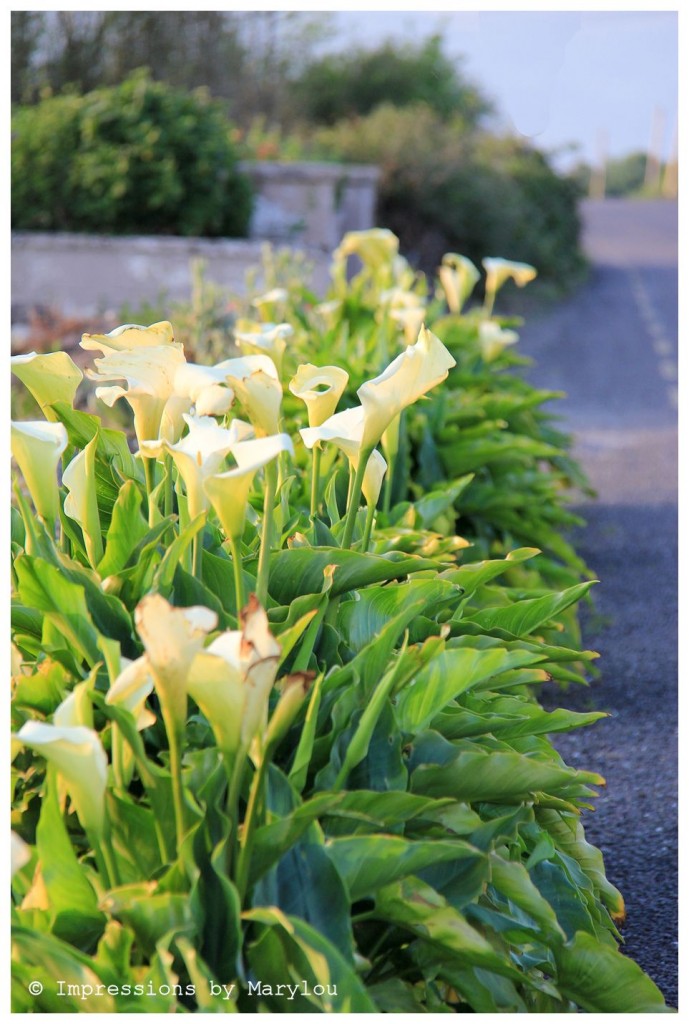 And in the evenings we had beautiful sunsets (when it wasn’t raining)
And in the evenings we had beautiful sunsets (when it wasn’t raining)
Our house was between the Dingle Peninsula and near the beginning of the Ring of Kerry close to the town of Killorglin.
As we did with the other houses we rented, we cooked as many meals as possible. I was looking for bread in a grocery store and found a package of farls. Basically it’s a cross between a potato cake and bread, although I didn’t know that at the time. We put them in the toaster to heat them up and they went splendidly with soup. Here is a recipe I have pinned to try sometime: Potato Farls.
The second day we were in Ireland, we headed out to town of Dingle. Ring of Dingle is the loop drive out near the tip of Dingle Peninsula. Isn’t that the coolest name ever!?!
On our way out to Dingle, we found a famous beach. Some movie was filmed there and that seems to be a big deal.
Because the coast was very rocky, it seems like one of the few flat sand beaches in this area.
Soon after, it clouded over and kind of misted off and on for the remainder of our trip.
This is one of the many stone buildings around the area that are centuries old. Many have a religious history.
The Dingle Peninsula is one of the areas of Ireland that was seriously affected by the Great Irish Potato Famine. In this area, it has not been farmed since people left in the 1860s. Can you see the ridges below? Those are still there from that era. I’ll have more on the famine later.
We also toured a group of buildings that is also still unoccupied from the famine.
Pictured below is a scene that is highly photographed. A. It’s beautiful. B. It actually has a pull-over so you can safely take pictures of it. As you can see from the road above ^ there is not an over abundance of road space.
Just passed this pull-over, in the cluster of houses on the right, was a cute little house where they advertised pie and tea. So we stopped and had a delightful little break. Her pie was more like a flat tart.
Off the coast there is a grouping islands. Among them is the Sleeping Giant. This is also the furthermost west point of Ireland and Europe.
This is an old church called the Gallarus Oratory. No one knows for sure when it was built but is it most likely at least 800 years old, and some people put it closer to 1500 years old. The walls are several feet thick. The stones stay in place because they are so well placed, and not because mortar was used.
My sister was the brave driver again! We didn’t have time to drive on the northern loop so we took a shortcut to head back to our house.
The next day we drove through Killarney to the Killarney National Park. Our destination was Muckross House.
This is a beautiful estate that was occupied one of the many ruling English landholders back in it’s day. Keep in mind that while the peasants living of off of potatoes were barely suriving, some of their landlords lived like this. I’m sure there were many landlords that didn’t live near so grand but that does take some of the charm out of it. . Especially when millions died from lack of food, while there was much food being exported. I was going to wait to say more about this until later. 🙂 Construction of this house was completed in 1843, just 2 years before the famine.
The gardens were quite lovely. You can see how large the rhododendron bushes are below.
We took a tour of the house. As usual, no photos allowed. It was grand. And there were working farms. You could also walk or pay for a horse and cart (called a jaunting car) ride to the nearby Torc waterfall. However, we also wanted to visit a sheep farm a bit south of there. We were told that you don’t want to head clockwise on the Ring of Kerry. The road has very narrow places, and all of the tour buses are traveling counterclockwise. So by mid-afternoon, we would’ve caught them coming back. So we boogied out, and were we ever glad we did. We did meet 1 or 2 buses and there were not kidding about the roads. Some places had a rock wall on the left literally inches from the road. The buses are bigger henceforth they owned the road.
We finally found the sheep farm in the middle of a very rocky terrain. Far from any town. The owner told us they only have phone satellite service.
Each dog is taught a different signal. That way he can be calling out to various dogs at the same time and they won’t be confused. They listen only for the signals they were taught. These dogs were ready to move 100% of the time. The second he gave a command they took off. This one is “guarding” the sheep that are already corralled. The owner said he wouldn’t leave them there alone for fear the dogs would eventually tear into the sheep. They are protecting the sheep from escaping, not keeping them from harm.
We came in on the shearing while a tour group was there. The tour leader cracked us up. He wasn’t Irish, but German (I think). He seemed to think we had some kind of connection. It was inappropriate, just like maybe he’s done tours for Mennonites before. 🙂
Sheared vs. Unsheared
Their fleece is worth very little, due to it being messy form living in rough terrain. The meat is of more value than anything. This farm has 3,000 sheep but tourism is their subsistence. The paperwork involved is crazy. Three sets of paperwork for every sheep. If one dies or is killed, paperwork has to be filed on it. Imagine that X3.
They also had sheep cheese for sale.
It was definitely worth seeing. You can see their reviews on Trip Advisor.
On our way back we didn’t encounter any buses, but we did come up on school group that was biking along this road. FRUSTRATING! The road is so very narrow and curvy that it was very difficult to pass them. There is no shoulder along the road for them to get off to let us pass. At one point, one of the girls tipped over into a ditch but her co-riders couldn’t even stop to help. That was definitely the most stressful driving of the whole vacation.
